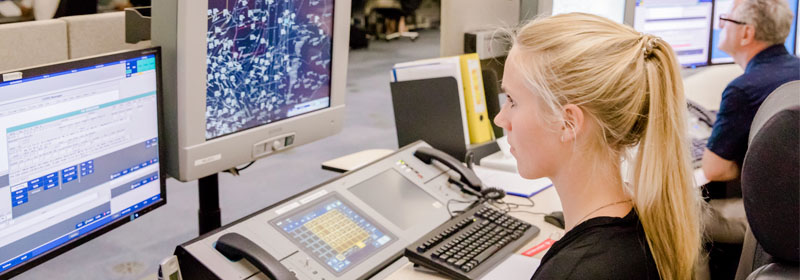The COVID crisis underpins the urgency for Europe’s aviation industry to push ahead with delivering the future Digital European Sky, and building a smarter, more sustainable and resilient system in the long term
An essential component of the future system is ground-to-ground interoperability, a solution designed to enable the swift and seamless exchange of flight trajectory information in real time between Europe’s network of 63 air traffic control centres.
Europe’s aviation industry has completed the final test of a new SESAR Solution on ground-to-ground interoperability, which is designed to allow the network of 63 European en-route control centres to exchange information on the flight trajectories in real time, thus supporting seamless operations and improving flight efficiency.
This milestone has been reached at a time of unprecedented crisis, due to the COVID pandemic, which is compelling the industry to push ahead with delivering the future Digital European Sky, in support of a smarter and more sustainable recovery in the long term.
Air navigation service providers in Germany (DFS), France (DSNA), Spain (ENAIRE), Italy (ENAV) and EUROCONTROL’s Maastricht Upper Area Control Centre (MUAC), together with the technology provider manufacturing industries Indra, Leonardo and Thales, have worked together on its development, within the context of the SESAR Joint Undertaking research and innovation programme (SESAR 2020).
This solution addresses a frequent problem that affects Europe’s air traffic, whereby flights crossing borders or different airspace sectors have to adjust their trajectory or speed to avoid conflicts with other aircraft. The problem is caused largely by en-route control centres sharing information in a sequential way and updating the trajectory information.
To address this situation the SESAR JU ‘4DTM’ ground-to-ground interoperability (IOP) project, coordinated by Indra, has developed a solution that allows the sharing of information in real time.
With this solution, control centres involved in the management of a flight can share reliable, complete and updated flight trajectory information from take-off to landing, taking into account any existing and shared internal restrictions in the airspaces that the flight will cross.
Final tests of this solution – following the first trials successfully held in April 2019 – took place last June during two weeks in an environment simulating the operations of the Maastricht UAC, Reims UAC, Karlsruhe UAC, Geneva and Zurich UACs, Padua and Milan UACs.
Thanks to the IOP solution, all actions carried out in one centre are immediately visible in all other centres, removing any uncertainty over the conditions under which a flight would enter another airspace.
The end goal is to attain a smoother control process, which will improve the efficiency of air traffic control in Europe and make it possible to manage more flights with greater precision and punctuality, offering cost savings to airlines, reductions in CO2 emissions and ultimately providing a better service for passengers.
The solution will also help carry out the ATC process “quietly”, without the need for the air traffic controller to coordinate with his/her counterparts in adjacent centres by phone. For this purpose, and implementing the “flight object” concept, all control centres share the same information and have the possibility to request changes to flight trajectories in real time.
Some use cases on which the solution was tested:
• Changes in flight level requested by the aircraft in order to avoid storms
• Route changes requested by the aircraft in order to shorten route
• Real-time updates on the information regarding a particular flight trajectory by using the Flight Object data
• Flexible flight transfer procedures between control centres
• Flight management coordination between centres
• What-if mechanism to preview and negotiate changes
IOP is the enabling ground-ground communication technology and protocols for seamless flight operation across regions and national boundaries, and underpins the 4D flight trajectory with the real-time sharing of the trajectory among all the ATM actors.
The results of these tests will be released at the end of this year, and will be used to update the ED133 standard developed by the European Organisation for Civil Aviation Equipment (EUROCAE), which will support subsequent industrialisation and implementation.
This project has received funding from the SESAR Joint Undertaking under the European Union's Horizon 2020 research and innovation programme under grant agreement No 734161.

